New F18 Cirrus 901: QA with Manu Boulogne & Matthieu Marfaing
Much written praising the new Cirrus 901, the 2021 Worlds are coming July 3rd and all performance questions will be showed on the water, still we wanted to know a bit more on the drive behind the launch of this new F18 Design. The 901 is truly an innovation for a production F18 (unlike others recently selling super proven features as new R&D…) bold move by Manu Boulogne, Matthieu Marfaing and the entire Cirrus Team. For more info go to cirrus901.com & cirrus901.com/story-and-development
F18 Worlds 2021 with 100 aprox Entries at www.f18world2021.org/en/regatta/entries
QA with Manu Boulogne & Matthieu Marfaing on the development and reasons behind the new Cirrus 901 F18 platform.
Manu Boulogne & Cirrus have a quite history with the F18, Manu was crowned World Champ in 2004 sailing his own built & designed F18, and further legacy delivering the very best quality in the Class.
– You have been working with Cirrus for a while, and you are a key part of this new project along Manu Boulogne, so why go with the 901, when Cirrus already had the Cirrus R and later the refined and proven R2?
Matthieu Marfaing: My mother remind me something a week ago. Since I was a little kid and starting sailing, I always said that I would like to design some boats… I have always been interested in design, performance, development, innovation, but never had the chance to be fully involved in the design and building process.
Since I started sailing with Manu, I have always been impressed with the quality of his boats. The Cirrus R and R2 are amazing boats. I also have a lot of respect for Manu, as he always worked with his team to innovate and never tried to copy anyone.
One day, I was looking at all the other sailing class in the world and thought that boats designed radically changed in the last couple of year in some of the classes .
When I looked at the Formula 18 Class, the main observation was that nothing really changed on the hull design since many years. I mean, yes, some designers came with some faster design, but from the outside, the changes was not big, everybody mostly worked in the same direction, developing boats from the previous generation. And this mostly for the last 5 years.
Manu and hi have always been talking about the future, but developing a new boat is a lot of time and not easy for a boat builder like Cirrus who is designing and building everything internally.
In 2020 the Covid-19 pandemic started, and I felt that it was an opportunity to put our new “free” time into R&D. I called Manu and asked him if it was a good time to start a new project for the company.
As you already know, we wanted to start from scratch! When we started the job, we had an gentleman agreement that we won’t move forward with a production boat if the prototype was not definitely better performing than the R and R2.
There are no compromise in the Cirrus 901. It was so much time to arrive to this result. You can’t imagine how much fun are going to have the sailors on this boat. This new boat is not only about extraordinary performance, this is also a boat that will give you a lot of pleasure, a boat that you would be able to enjoy with friend and family, easy and safe to use in windy condition.
So Why go with the 901, when Cirrus already had the Cirrus R and later the refined and proven R2? Because this is Cirrus DNA’s to never stop and always try to do better for his Cirrus community and our future boats owners. This is how we want to be part of the future…
Because innovation is exiting and this is our job, Builders and sailors, to build the future.
After having so much fun into the F18 class, we are very happy to give back to our class!
– The R already featured superior downwind speed due to a flat and wide transom and hull cross sections,the R2 was polished further. Thus which is the goal taking that concept farther towards the hull bow bottom?
The development of this new project is not a continuation of previous projects. We resolutely sought another path. Start from a blank page and imagine all our feeling and experience for an Formula 18 ! We Looked for the best performance but also the best sensations of sliding.
– Some multi designs have already attempted that route, the Hidroplaneur, and a Ventilo/Mattia 16 footer cat. Is clear a flatter bottom can generate additional lift at semi planning conditions as stated above, (for ie the Scorpion has the flattest square transom in the F18) but concerns is always upwind in light winds and all designs , vintage like Tiger or modern need to dig the bow to point. How the 901 has bypassed that must have feature / trim in light winds?
MF: The T-Bow (triangle hull) is a new design. Its shape is original for its passage through waves and its lateral grip capacity. His very shallow draft gives it a lot of mobility and the ability to start quickly.
Some Work on flat hulls has been done in the past, but are very different from our hull design. In addition, the most interesting and innovative work in the catamaran family has often been initiated by Mr Enrico Contreas / MATTIA.
– I see also you have implemented a Formula Windsurfing cut shape to the transom bottom, that’s another clever feature, I tried channels on my RC16 back in 2007 it works good, but didn’t had the guts to implement it on the Scorpion. You guys have gone for the full package, congrats on daring to built such concept
Thank you! Yes it seemed interesting to us and we wanted to go after what we thought was best! It is difficult to quantify all the small innovations in terms of performance but the feeling and the experience complete our copy!
– Which other aspects you have addressed aside the innovative hull design ?
We’ve been working on project 901 for over a year! Each part has been redefined and chosen. A lot of things cannot be seen but have been particularly worked on. The composite process, the partitioning and assembly plan of this new boat have been the subject of very interesting studies and tests.
The development of sails with Jay Glaser was also a good progression and an exchange of skills between our Cirrus yard and the extraordinary Glaser Sails sailmaker.
The mast, which is fitted to many F18s today, fits our needs perfectly; The lateral and longitudinal inertia, the geometry and the choice of aluminum make this our best mast profile.
– Rudders and Daggerboards shape /sections have changed from the R2?
MF: We really like our rudders and boards for their designs (100% Cirrus made) and their articulation and control systems! We have without any hesitation decided to keep this setup.
– Does the 901 has a convertible case like the R2?
MF: No, We wanted to develop a 100% F18 project and therefore not convertible.
– Have many hours and which sailing conditions you have done on the 901?
MF: Since March 2020, we have accumulated many hours of R&D and test!
3 prototypes and 2 tools were produced to validate the performance of the new 901. We also sailed more than 50 hours with each prototype in variable conditions from 5 to 35 knots to validate on the one hand the performance but also the validation of the construction choices.
– Which are coming regattas the 901 will be racing before the Worlds?
Unfortunately, due to the Covid 19, it was not possible to do any races before the worlds.
– How many boats you might have for Italy?
The new Cirrus 901 will start to be delivered to customers mid-July, just after the world. We will be the only Cirrus 901 at the world and the boat will be visible for the first time at the world.
– Which are next steps for Cirrus after Worlds ?
MF: After the world we will be going to the F18 Americas, St Barts cata-cup in November, and Martinique Cata-raid last week of January. To each of this event, we will grow the Cirrus family with some delivery of the new Cirrus 901.
After a year of R&D, time is coming to enjoy the boat on the water and to introduce it to the F18 family!
We can’t wait to see how the boat will be sailing in a fleet and if/how this new design will influence future multihull designs.
—
Below some Qs from readers:
–Quentin Deslandes:
Why is the hull bottom so flat and bow up at the front?
The glide was the N1 leitmotif of this development. Looking at our research results, we have turned to this new concept.
All in all, the bow line remains quite low.
Which is the the upwind and downwind performance?
I would say that we are very happy! Starting in the very light wind, the boat moves very quickly! Upwind we have the capacity to point very high with a good speed and downwind, this is another world. We never experimented this feeling before. So much fun!
With such a sharp front end, is there a greater risk of having a pitch pole?
The resistance to pitch pole is extreme! Absolutely no comparison with a classic F18. This is probably the safer f18 on the market regarding the risk of pitch pole.
How are the hull constructed? Material, number frames, rigs.
This is the part that is less visible, but it is in this area that we probably have innovated the most…
Choice of resins – fabrics – core materials – plan of reinforcements and partitions – assemblies, etc. This is a great job as a builder. The production time of a 901 hull is 30% longer than a standard Cirrus hull. Building quality standards of the R2 was already very good, but the Cirrus 901 is definitely pushing the boundaries…
–Galt Olivier
The design shows the the bridle wires hull connection very low which creates a lot of spray in the video and I would imagine a lot of drag?
On this T-Bow hull, the forestay attachment area is fixed in a water clearance zone. The partial spray around the bow you’re probably talking about will be half the water displaced compared to a conventional hull.
I understand that the idea was to get the jib lower to help the airflow into the decksweeper main but why would they choose bridle wires instead of a solid bar running across on top of the hulls which the forstay attaches to, Seems like a lower drag option?
No, the idea was not to lower the jib to help the air circulate in the decksweeper mainsail but rather to have better management of control and efficiency of the three sails.
Regarding the bow bar, I will say that the first reason is that the F18 class does not allow this.
–
Others / FB:
Why those Sail colors on the Main and Spi?
For the development and tuning of the sails, we have used the stocked fabric for economy reasons.
Looks like drag has been reduced in the stern and increased in the bow?
For us, the important thing is the general drag! You need to think more about the volumes of water displaced under the boat than above !!


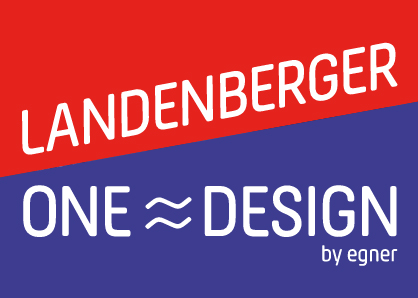
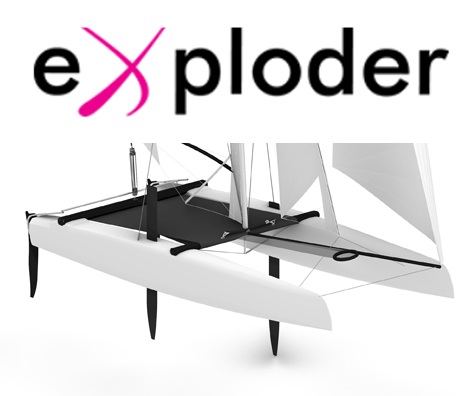
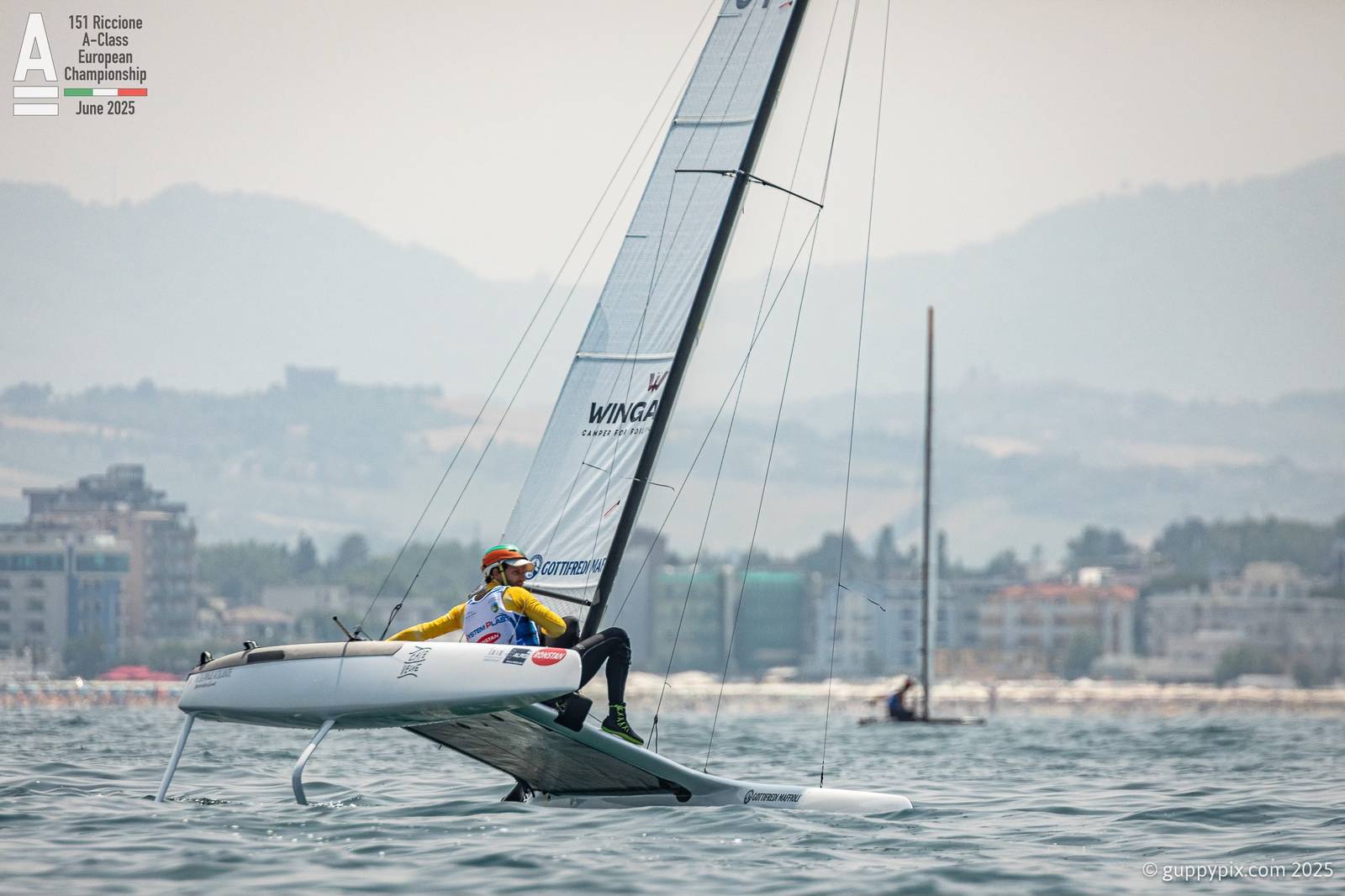
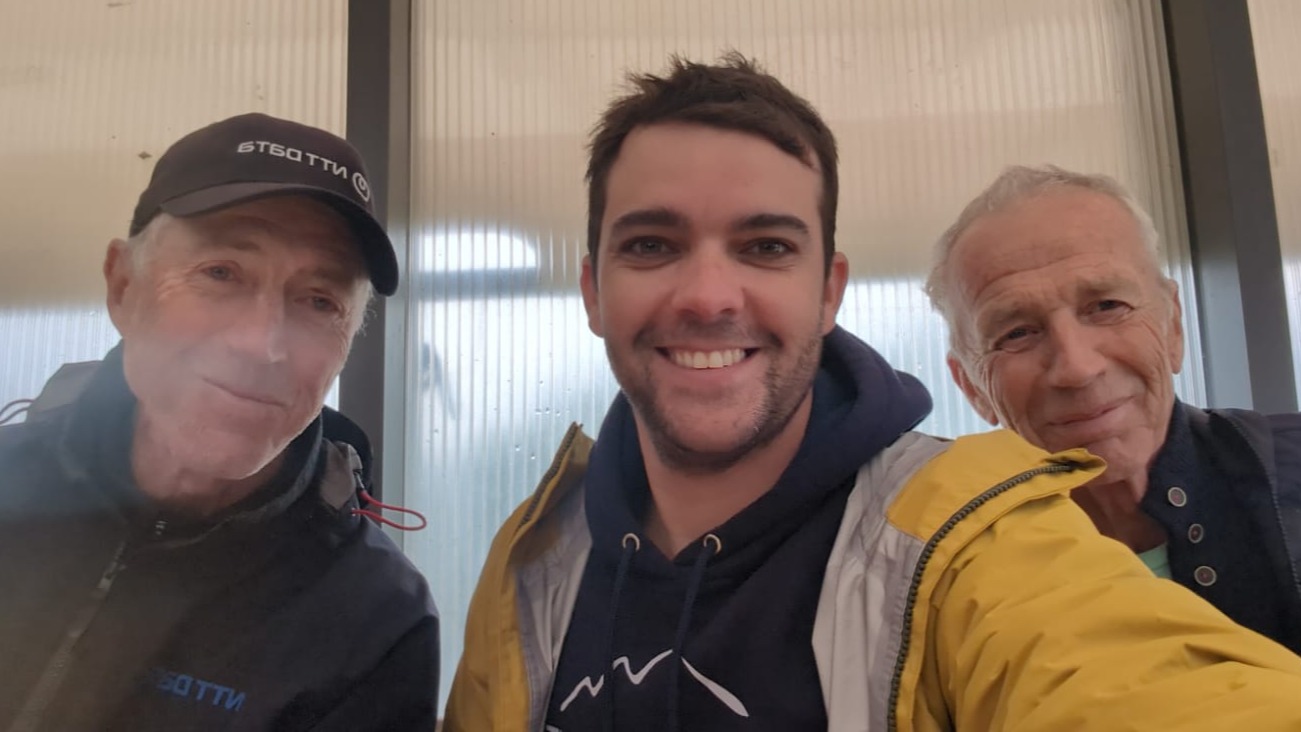
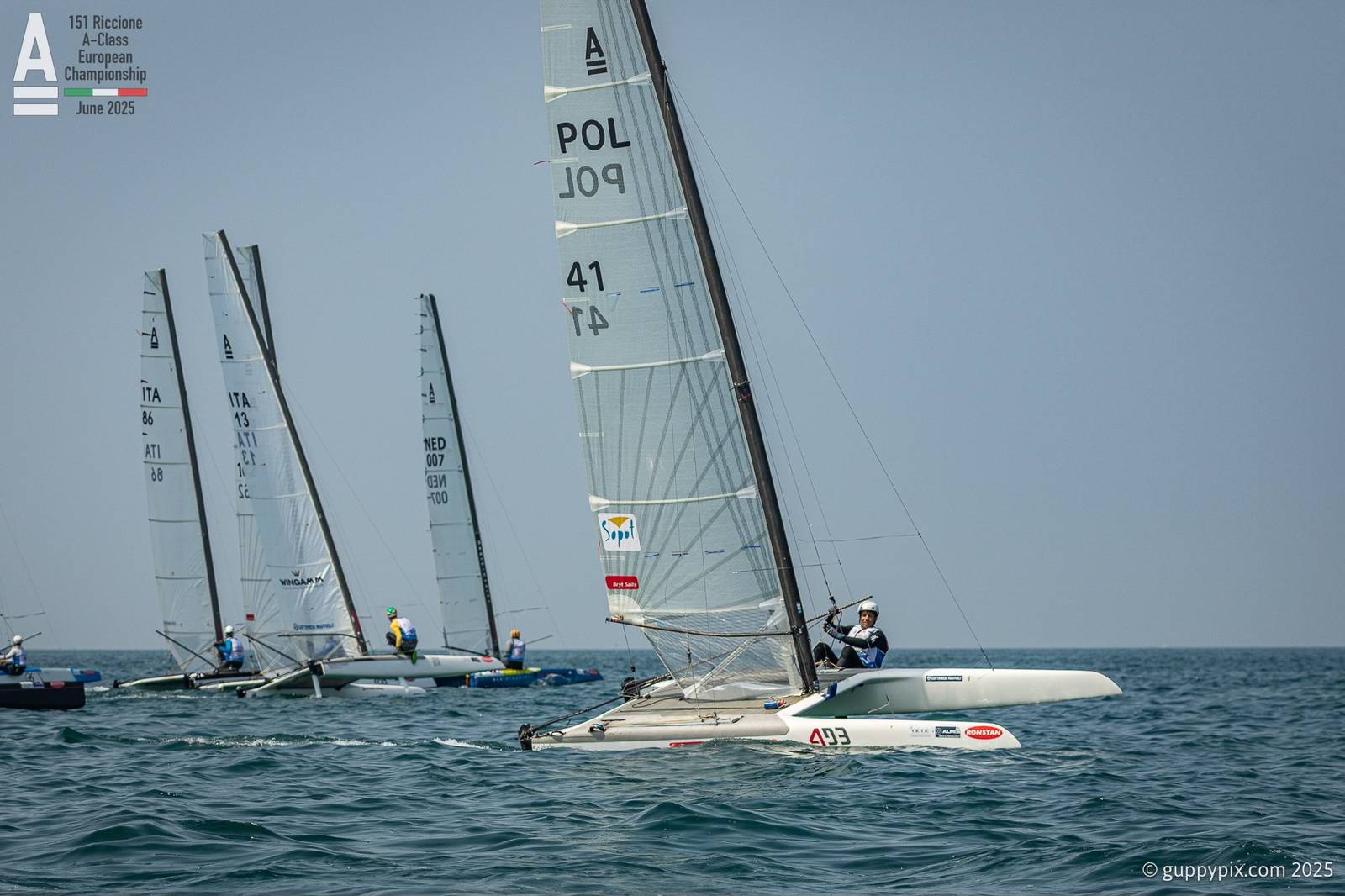
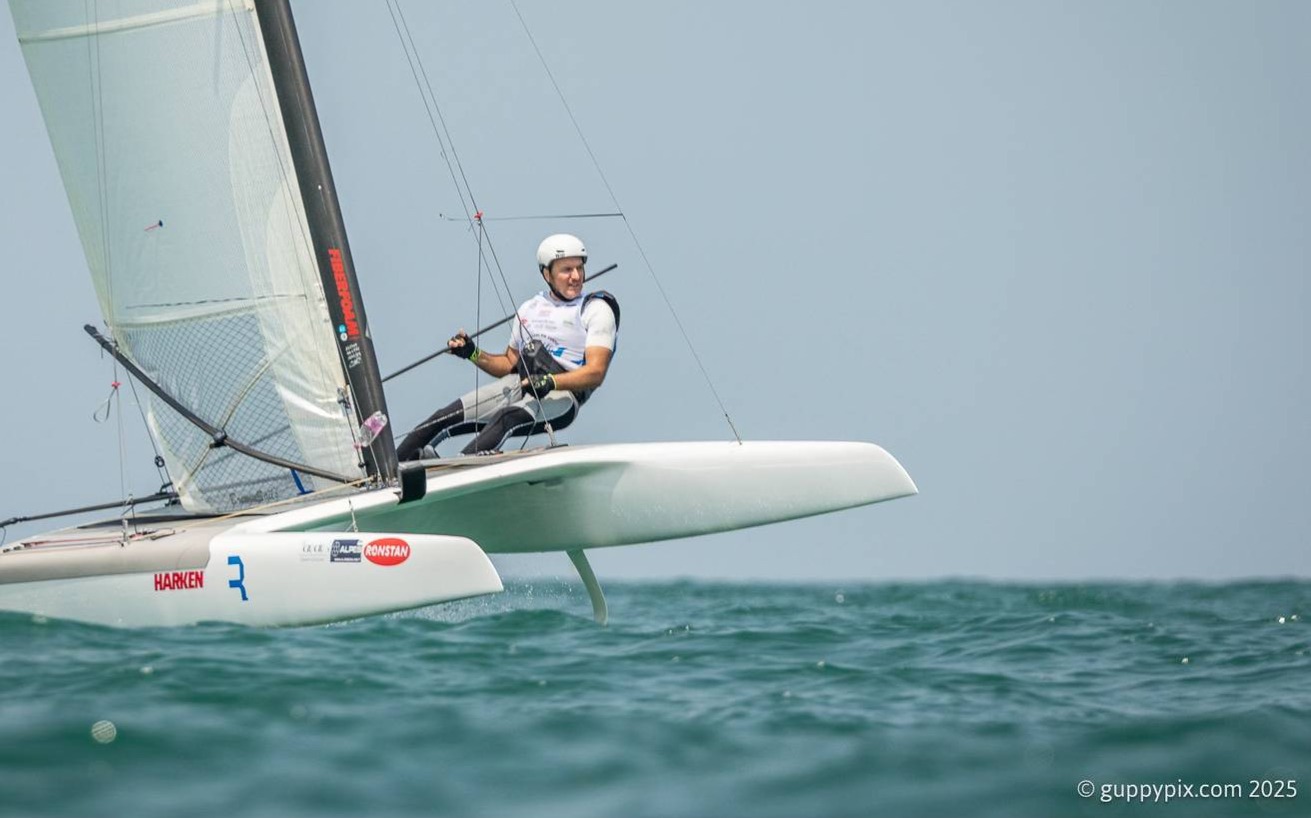
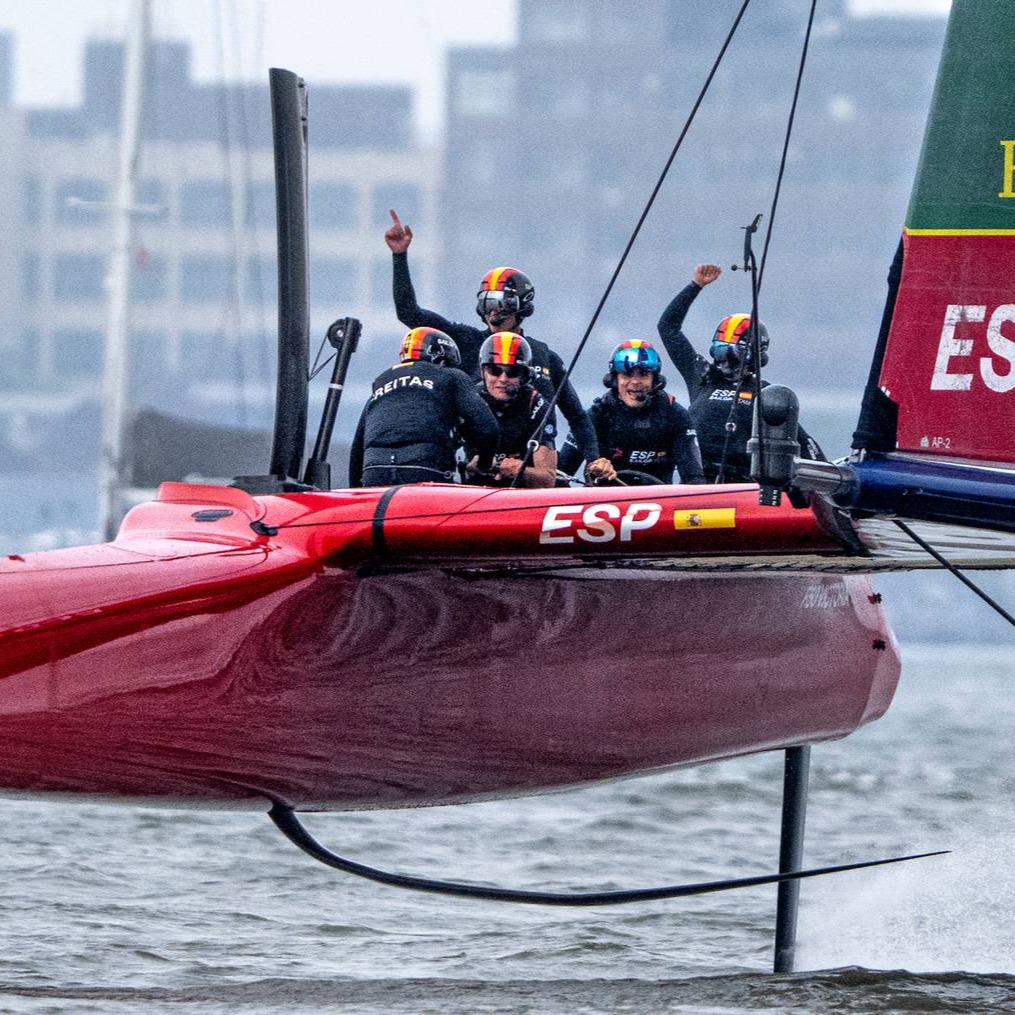
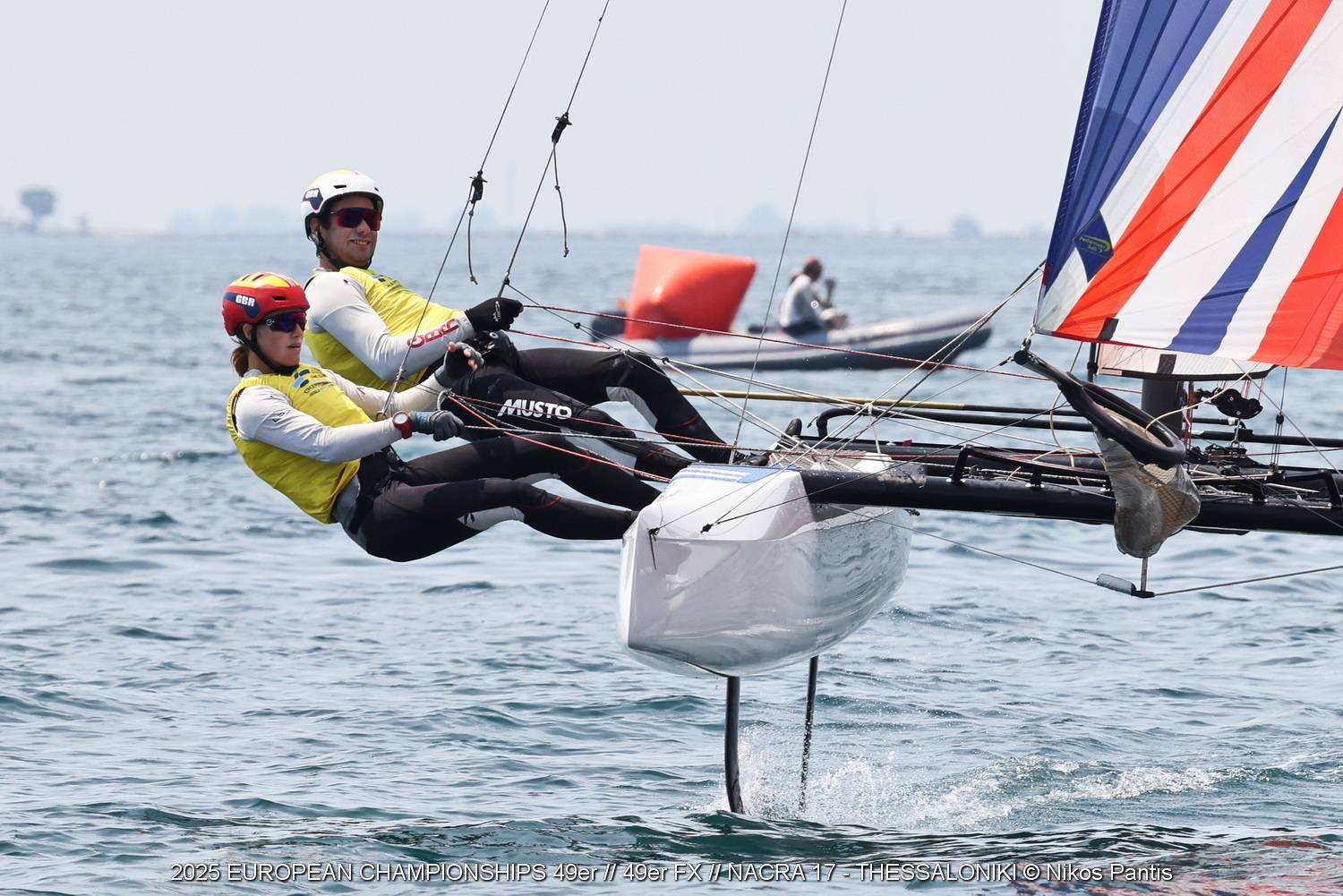
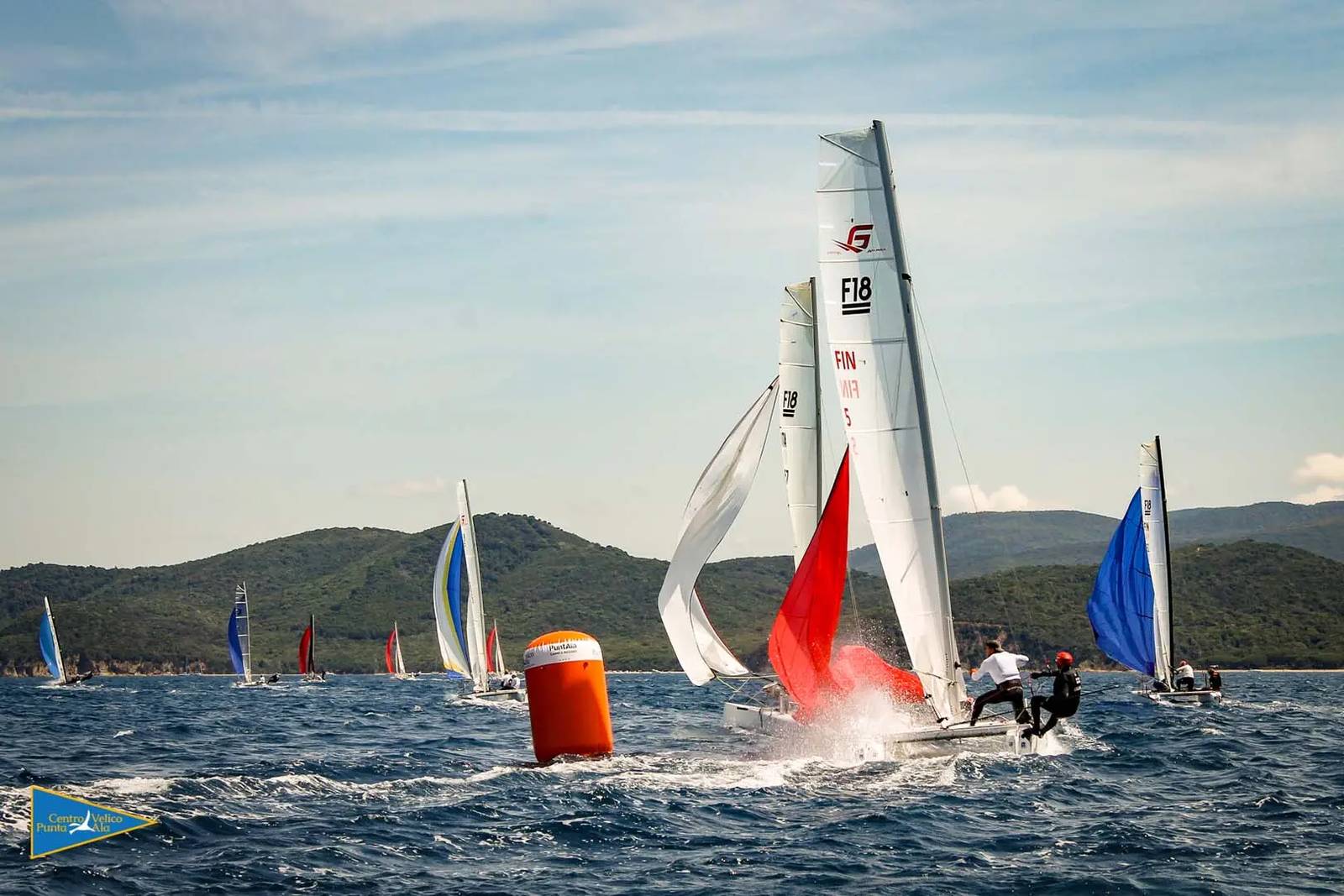
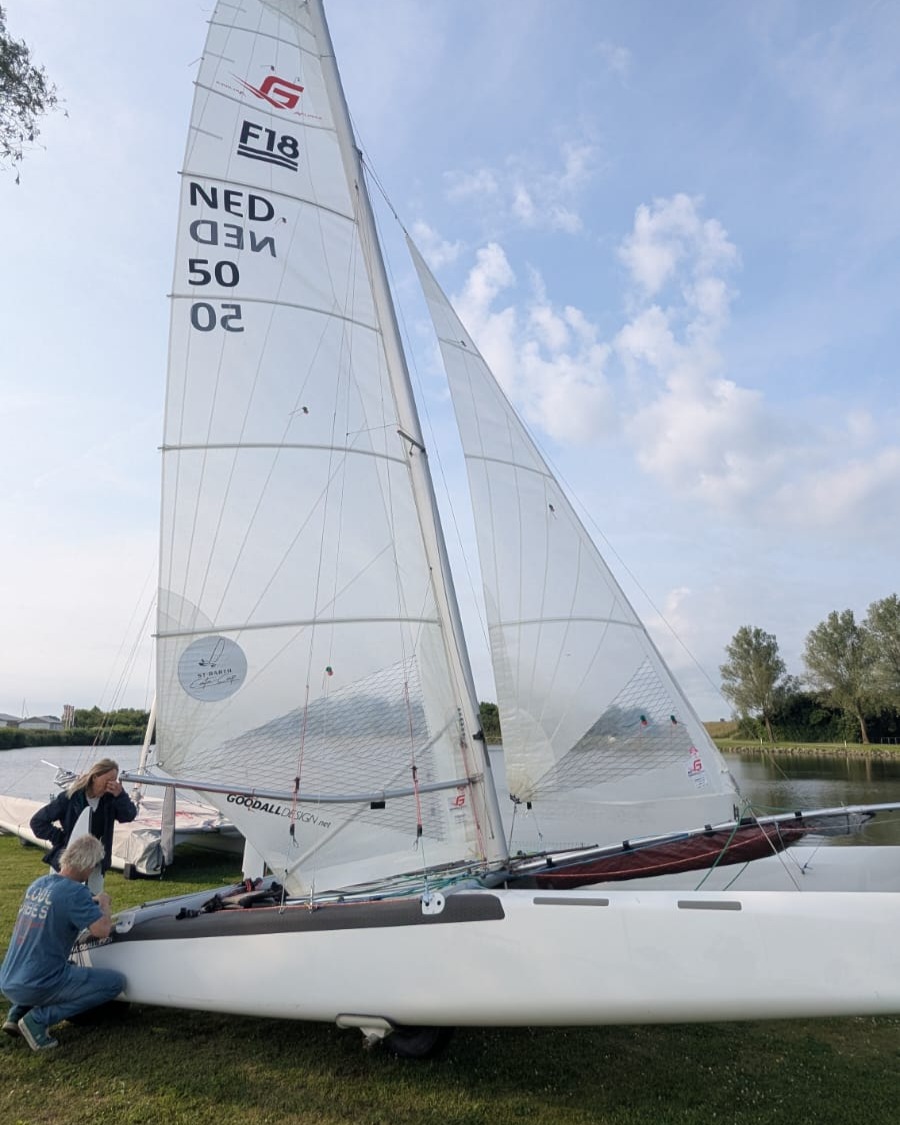
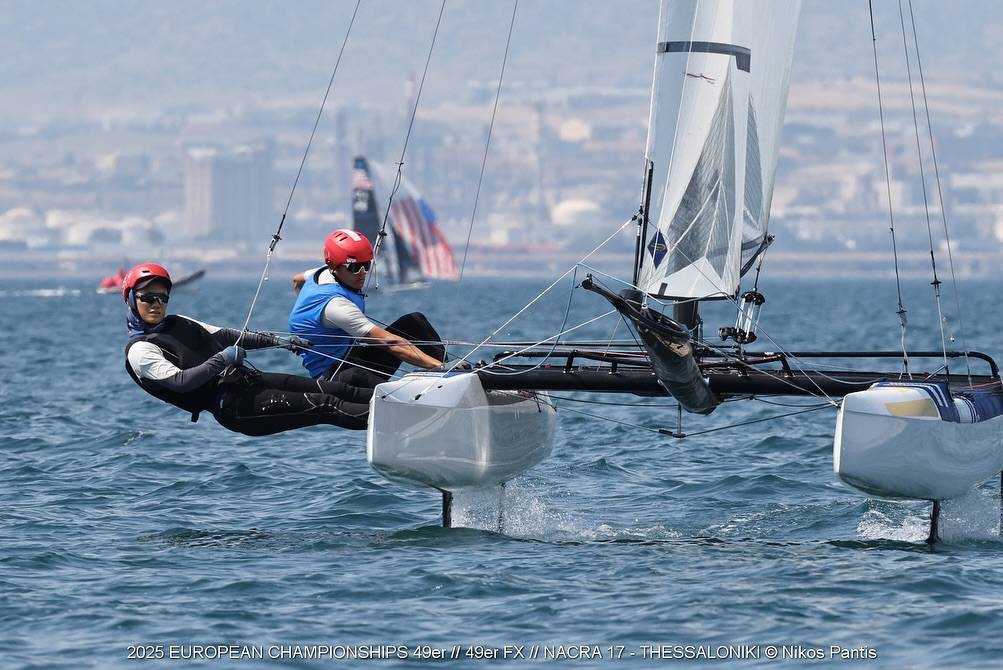


















I just heard that my great sailing friend and former CEO of Hobiecat Europe has passed. May The endless oceans…
...Report was sent by an F18 Sailor, if you want Hobies reported send your own, we'll publish as usual. Cheers.
Looks like in your report the Hobies are not really present. Suggest to rewrite the article.
Thanks for the great report Wik. Great battle.
If I correctly read the results the overall winner this year is a Hobie16